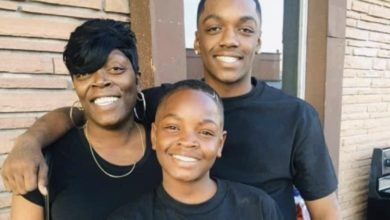The following article appeared Feb. 27 on pslweb.org.

After a nearly 20-year campaign by Native American activists and their supporters, the University of Illinois at Urbana-Champaign sports mascot that depicted a fictitious Illini chief was finally barred from performing in February.
“Here it is 20 years later. They had the opportunity to change this and they chose to dig in more every time. They are not doing this for the right reasons—not because it is hurting Indian people, but because the NCAA decision is hurting them. But I am pleased,” Charlene Teters told pslweb.org.
Teters is a Spokane Tribe Indian and graduate student at UIUC. She, along with others, initiated the campaign to eliminate the racist Illiniwek character in the late 1980s.
The UIUC had been barred from hosting postseason sporting events since August 2005 after a National Collegiate Athletic Association decision was issued banning offensive stereotypes of Native people in academic institutions. The long-awaited elimination of the racist characterization by UIUC of Native people will now lift that ban.
The NCAA had directed 18 colleges and universities in their jurisdiction that they could no longer use their team names and mascots in postseason games. Several schools, including the University of North Dakota, the University of Utah, the University of Central Michigan and Florida State University, tried to circumvent the ruling by finding Native American individuals and tribes to endorse their names.
The racist character of Chief Illiniwek was created in 1926 and has performed at the university’s sporting events ever since. Teters began protesting the use of the character after her children became upset by the racist character’s dance at a basketball game. Her children were taught that the use of eagle feathers was reserved for esteemed members of the community and not for comic relief at sporting events.
The character was portrayed by a white student who dressed in Native-looking garments and did a dance routine. Those who wanted to hold on to the racist mascot claimed that it honored Native people. These same forces never mention the genocide of an estimated 16 million Native people who were killed by the colonial expansion in North America and whose resources and land were stolen by the colonial powers.
The elimination of the mascot is just one step in this struggle, as the sports teams will still be called the “Fighting Illini.”
“We would like to see all of that go. It will always be an Indian symbol to them, a name that refers to the remnants of the Peoria tribe who were relocated under the gun to Oklahoma,” Teters told pslweb.org.
“A university should be free of racism and bigotry no matter what a person’s background. All people should feel welcome and respected. These mascots create a very hostile environment and a litmus test for how you are treated. You either internalize the racism or fight,” said Teters.
Human beings, not mascots
In 1991, the National Coalition on Racism in Sports and Media formed under the leadership of American Indian Movement leader Vernon Bellecourt, Charlene Teters and others to organize and fight the promulgation of racist images and messages in sports and the media. This formation led to activism around challenging these racist images on a national level with pickets at sporting and media events.
Support grew around the country with national organizations supporting the ban. Some organizations that signed on included the NAACP, National Education Association, Amnesty International and the Modern Languages Association. Even within the University of Illinois, some departments took official positions in favor of retiring the mascot.
Bellecourt, the president of the NCRSM, explained to pslweb.org that the coalition organized under the slogan, “Indian people are human beings, not mascots for America’s fun and games.”
“We said that the practice of team mascots demeans, degrades, distorts and trivializes the beautiful culture, dance and music of Indigenous people and is an attack on the self-esteem of our people. We are not only the victims of this practice, but it also victimizes those who perpetuate these stereotypes by the educational system lying to them with curricula that ignores the real history,” said Bellecourt.
“Through our work, hundreds of high schools, colleges and universities mostly led by students, dropped the Indian team mascots and names,” Bellecourt continued.
The struggle may turn to the gains made by activists who won bias and hate crime legislation in the 1990s.
“We are currently consulting with attorneys to target hate crime violations against the Washington football team and possibly others who refuse to have a dialogue with us,” said Bellecourt.
Visit http://aimovement.org/ to read more history on this struggle and for educational resources on eliminating racist mascots.
Native activists have protested racist symbols in sports for decades, like this October 1995 event in Cleveland. Right, Vernon Bellecourt
Photo: Phil Masturzo






